Posted: September 17th, 2014 | No Comments »
Groombridge Place in Kent is a charming manor house with lovely grounds near Tunbridge Wells. Various houses have stood on the site and the current one dates back over 300 years. It was the location for the Kera Knightley Pride and Prejudice a few years ago and Arthur Conan Doyle used to hang out there. What interests us here of course is the house’s Oriental Garden, though I’m afraid I can’t find out exactly when this was laid out. It has magnificent Japanese maples, ancient Acer palmatum trees and borders, various grasses a grass fountain and bamboo as well as some nice Chinoiserie garden furniture and two granite Chinese dogs.


Posted: September 16th, 2014 | No Comments »
Evelyn Waugh’s 1932 short story Incident in Azania (which can be found as part of his collected short stories) is really a short follow on tale from his classic novel of the Empire in Africa, Black Mischief. We are back in the fictional East African state of Azania (a combination of Zanzibar and Abyssinia), among the rather daft British colonists and in their club in the dusty capital of Matodi (obviously modelled on the infamous Muthaiga Club in Nairobi where the Happy Valley Brits congregated, slept with each other and plotted murder in the 1920s and 1930s- see White Mischief). A rather pretty and interesting young woman arrives in the small colony with no available women and quite a few bachelors looking for wives. All court her until she is seemingly kidnapped and ransomed by local African bandits. It’s a rather amusing story and the letters from the kidnapped English girl request a gramophone, records, lipstick etc etc. She is eventually released but was she ever really kidnapped?
What I didn’t realise until recently is that, though set in Africa, Waugh’s imagination was sparked by the case of a young Englishwoman “Tinko” Pawley who was kidnapped in 1932 in China and held to ransom. She was genuinely kidnapped but did, with rather British pluckiness, write asking for soap and lipstick. I blogged about that kidnapping the other day here.
To my knowledge (and relying on Selina Hastings’s excellent bio of Waugh) he never visited China but did read the news and rushed the story out shortly after Mrs Pawley was released in The Windsor Magazine in December 1932. Reading the story now it could quite easily be from the pen of Somerset Maugham (who of course did visit China and wrote extensively about it) and the goings-on and obsessions of the class and nation-ridden British ex-pats could easily be transferred from Azania to China. In fact it’s hard not to read the story without thinking of those stuffy old clubs in China that so fascinated Maugham in On a Chinese Screen.

Posted: September 15th, 2014 | No Comments »
The British Film Institute (BFI) has gathered together some of its collection of footage of old China, including Shanghai, Peking and Hong Kong…well worth a look…click here

Posted: September 15th, 2014 | No Comments »
Should you happen to be in East Sussex tomorrow (Monday) and have time for a trip to the Rye Arts Festival, Jane Gardam will be talking about her Old Filth trilogy (which I personally like very much) – very happy to finally see her talk in person after enjoying her Hong Kong Old Filth books for years….
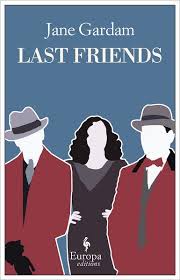
Last Friends is the final part of the Old Filth trilogy by novelist Jane Gardam and she will be talking about the book in the Marquee in Lamb House garden at 3pm on Monday 15th September.
Old Filth is the acronym for ‘Failed in London try Hong Kong’ and described the colonials in the Far East who didn’t quite the mustard in the UK and therefore chose to go into the service of the mother country and its natives on the other side of the World. Sir Edwards Feathers, the eponymous character, was anything but a failure. A child of the Raj who had been born and orphaned in Malaya, he moved to HK and was a colossus in its legal system.
In the first book Old Filth, the story is told from Sir Edward’s point if view and it recounts his life history, including his childless marriage to Betty and long and bitter rivalry in the courts and in love with Terence Veneering. Stolid, dull Old Filth – v- the flashy arriviste Veneering. Book two The Man in Wooden Hat retells their stories from Betty’s standpoint and reveals her very deep love for Old Filth but passion for the louche, dangerous and very clever Venereering.
Now in the last part of the trilogy Jane Gardam rounds up and concludes the story of the two lawyers, who in retirement in the UK find themselves next door neighbours in the English countryside which neither would nor could have called ‘home’ for most all of their lives.
The books are funny but bitter and recount the apogee and relentless decline of Empire. But there is hope in terms of the rapprochement of the two formerly powerful colonialists.
Posted: September 13th, 2014 | 1 Comment »
Quite by chance, and in want of something to read on a train journey, I’ve been delving into the diaries of the noted London theatre critic James Agate (A Shorter Ego) and his recollections of the 1930s. Agate was mildly known to me for having written a great debunking of the London and New York stage production of Pearl Buck’s massively over-rated The Good Earth. I’ve never much liked this book so was pleased once to come across a review of Agate’s entitled “Chinese Bunk”, trashing the play and asking the rather good question of why no Chinese actors were cast in any of the lead roles? Fair point and one made often today, but distinctly less so back then – poor old Anna May Wong desperately wanted the lead but was harshly rejected.
Anyway, Agate was strangely fascinated by the kidnapping case of a certain Mrs Pawley in 1932. I didn’t know this case, but I should. Apparently, in the autumn of 1932, Mrs Kenneth Pawley and Mr Charles Cochran, Mr Duncan-Macintosh (all Brits) and two Chinese servants were kidnapped and held for 44 days by Chinese pirates. Macintosh managed to slip his bonds and escape, raising the alarm. They were released eventually after a ransom of $32,500 (a massive sum at the time I think), a chest of opium and some winter clothing were handed over. Mrs. Pawley lived in Newchwang (now Yingkou), was only 19 and had only been married three months. The bandits, clearly desperadoes of the highest order, also kidnapped Mrs Pawley’s dogs (an Irish Setter and an Alsatian) and threatened to cut her ears off if the ransom wasn’t paid. Mrs Pawley was the daughter of medical-missionaries and was heading of to visit them in Newchwang, leaving her husband at home in Tientsin. Like all good China sojourners Mrs Pawley (fully Edith Muriel Philips Pawley, or just called “Tinko” by her friends) got a book out of the escapade, dictating it to her friend Joy Packer nine months later while recuperating in Weihaiwei (now just Weihai) – My Bandit Hosts (1935).
Tinko was clearly a character such as are rare these days. Agate records her, threatened with dismemberment, freezing cold and half-starved writing to her parents to request they “send me some lipstick”. At the time there were fears, unsubstantiated but reported in the more sensationalist British press, that Mrs Pawley would undergo death by a thousand cuts with cayenne pepper placed in the cuts to accentuate the slow agony of death! When it looked likely that the ransom might not arrive, Mrs Pawley’s only comment was “Soap required urgently”. Agate reports on November 16th 1932 simply, “Mrs Pawley ransomed.” and indeed a Japanese official in occupied Manchukuo (Manchuria) did appear with the ransom and Mrs Pawley, Mr Cochran and the two dogs were set free. The French newspaper L’Illustre carried a rather dramatic picture on its cover (click here).
Mrs Pawley also inspired a short story by Evelyn Waugh – Incident in Azania – more on that soon….
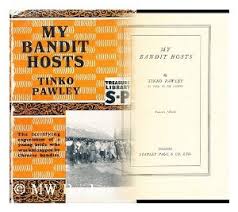
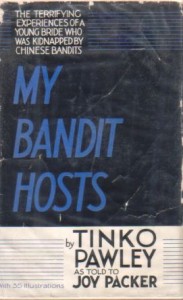
Posted: September 12th, 2014 | No Comments »
The ever fascinating Jonathan Wattis Gallery in Hong Kong has a new sale and exhibitions until the 11th October….
The Mapping of Asia
A collection of fine antique maps from 16th to 20th century
including a group of city plans
Thursday 11th September until 11th October 2014
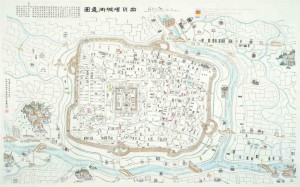 Plan of Chengdu 1894 – Wu Zhuofu, Chengdu Studio
Plan of Chengdu 1894 – Wu Zhuofu, Chengdu Studio
Â
20 Hollywood Road, 2/F, Central, Hong KongÂ
Posted: September 11th, 2014 | No Comments »
Personally I’m more old Shanghai than rugger buggar but still Simon Drakeford’s history of rugby in old Shanghai is now available and sheds some further light on those old Shanghailanders and there goings-on….I wonder if rugby players then were as generally obnoxious then as they invariably are now?
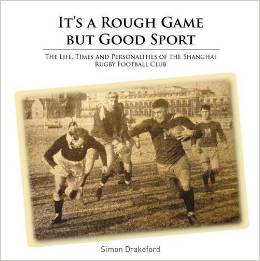
This book provides the full history of rugby in Shanghai from the 1860s through to today. The path to the creation of the Shanghai Rugby Football Club was winding. Rugby football and association football were played in each of the four different Shanghai Football Clubs established in 1867, 1881, 1889 and 1892. In 1904, the rugby players broke away from the fourth Shanghai Football Club and so at last a standalone rugby club was formed which remained in existence until 1950. Forty-five years later, foreigners once again established a rugby club in Shanghai. This book tells the story…
Posted: September 10th, 2014 | No Comments »
Ever since Shui-On group built the faux heritage nonsense that is Xintiandi the fate of Dongtai Lu has really been sealed. Demolition.
The market itself (a bit more tat and fake than curio and antique) has only been on that site since the 1980s. Dongtai Lu was once Rue Tai Chan in the French Concession and constructed around 1902. The street was originally named after Taishan in Guangdong Province and well-known by many at the time as it is estimated that over 75% of all overseas Chinese in North America until the mid- to late-twentieth century could claim origin from Taishan. It was   renamed in 1906 after A. Hennequin, a member of the Conseil Municipal and an agent of the Messageries Maritimes shipping line. Though French he was elected Chairman of the British dominated Shanghai Club in 1878. The road was a popular location for street entertainers long before it became a market.
I expect it’s been a while since anyone scored a real bargain down Dongtai Lu. Going back to the early 90s it was still possible to find old books and old Shanghai signage and I got a few maps there. I’ve heard of wonderous finds at bargain prices but suspect these were truly miracles. Still it had a certain old school charm and such streets (think of New York’s flea markets, London’s Portobello Road or Paris’s Cligancourt) are, I think, essential pieces of a city’s infrastructure. More tower blocks and probably coffee shops and a luxury mall won’t add much I fear. Of course many of these properties are uncomfortable from the point of view of modern conveniences, but not unrecoverable by any means if there’s a will to do so – which there, of course, is not. As ever I doubt any of the current residents will be able to afford, or have the sway, to stay living in the area and the community will go as well as a mixed environment in downtown Shanghai.










